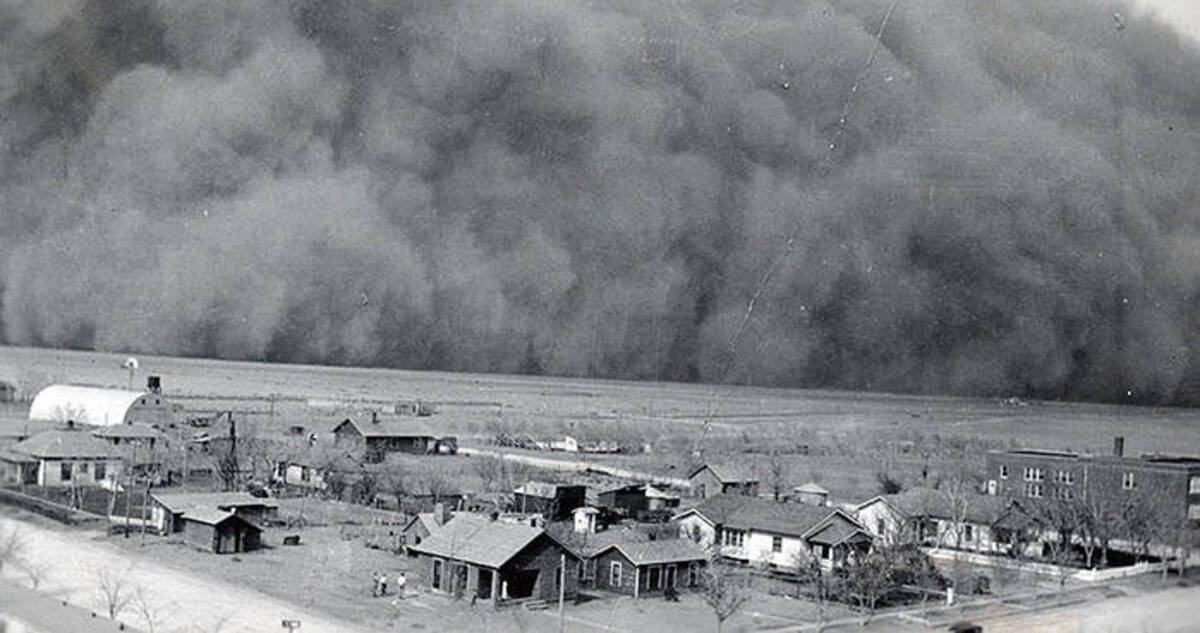Black Blizzards and The Dust Bowl

Coinciding with the Great Depression of the 1930s—another worst hard time—the Dust Bowl was a period of severe dust storms that fiercely damaged the ecology and agriculture of the American and Canadian prairies, caused by a protracted drought and the failure by farmers to apply dryland farming techniques to prevent wind erosion.
Despite near desert-like topography, in the decades following the Civil War, farmers flocked to the region under the false assumption that rain would follow the plow. The region prospered in the first three decades of the twentieth century, due to advances in farming such as mechanized tractors, improved irrigation techniques and an unprecedented period of abundant rainfall.
Unsustainable Farming Methods
From 1900 to 1920, the amount of farmland in the region doubled, and from 1925 to 1930, the amount of cultivated land nearly tripled. During these same periods, farmers employed techniques that depleted nutrient-rich top soils that led to widespread erosion. Heavy plowing led to the eradication of deep-rooted grasses that held the prairies intact, followed by a severe drought that afflicted the region for the entirety of the 1930s.
The heart of the Dust Bowl was comprised of approximately one hundred million acres, encompassing the panhandles of Texas and Oklahoma, western Kansas and large swatches of eastern New Mexico and Colorado.
Black Blizzards
As the drought intensified, lung-choking dust storms became known as black blizzards. The worst of these fell on April 14th, 1935, when it hit Beaver, Oklahoma round 4 pm, Boise City around 5:15 and Amarillo, Texas and 7:20. Avis Carlson was caught in the midst of this most deadly black blizzard.
“People caught in their own yards grope for the doorstep. Cars come to a standstill, for no light in the world can penetrate that swirling murk…. The nightmare is deepest during the storms. But on the occasional bright day and the usual gray day we cannot shake from it. We live with the dust, eat it, sleep with it, watch it strip us of possessions and the hope of possessions. “
Intense efforts were made to correct the problem, including crop rotations contour plowing and terracing. The Civilian Conservation Corp planted more than 200 million trees from Texas to Canada in an attempt to block the wind and hold the soil in place. Unable to pay mortgages or grow crops, the Dust Bowl forced tens of thousands of poverty-stricken families to abandon their farms.
Known as Okies, these destitute people migrated en masse to California and other states, only to discover that the Great Depression had rendered these regions only mildly better than the conditions they were forced to flee.
